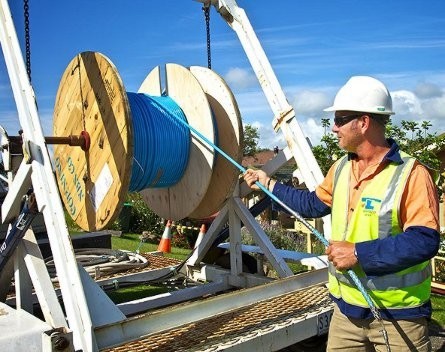
In his independent audit of the public policy process behind the national broadband network, former Telstra director Bill Scales suggests there was never an internal debate about different technology options for the NBN.
He also argues the panel of experts (of which I was a member) assisting the Rudd government did not properly test advice from the Australian Competition and Consumer Commission (ACCC) about the upgradeability of a Fibre-to-the-Node (FTTN) network to a Fibre-to-the-Premises (FTTP) network, and that the panel inappropriately relied heavily on this advice in making recommendations to the government about the development of the NBN.
In my view, all of these assertions are incorrect, and this taints the credibility of the audit.
In reality, the panel spent many hours discussing and analysing the technology options and the upgrade paths, including those set out in the various proposals submitted by companies in response to the government’s Request for Proposals (RFP). The panel also independently evaluated other models for upgrades.
The panel, which included telecommunications experts from both industry and academia, carefully scrutinised all advice it received, and drew heavily on its combined experience. Some advice was very helpful and some was considered to be of little value.
When the ACCC tabled its advice regarding the costs of upgrading FTTN to FTTP, it came as no surprise to the expert panel that the ACCC had a view that was similar to what the panel had already concluded. Simply put the panel did not rely heavily on the ACCC advice.
A fundamental flaw with the audit process was that Scales, by his own admission, did not have access to key information, with limited access to documents associated with the panel of experts’ activities.
Members of the panel, constrained by strict confidentiality rules, were also unable to share any further information with Scales about the details of panel discussions and deliberations. Without divulging any details, I was able to explain the situation regarding the ACCC to Bill Scales when he interviewed me for his report, but it seems he did not put much weight on my comments.
Scales seems to have missed the point that upgradeability was an important issue from the outset of the RFP process. The RFP for NBN Mark I included many requests for information from proponents about how they proposed to future-poof their networks by providing upgrade paths from FTTN to FTTP. It even suggested a 2020 time frame for this upgrade. The consideration of upgradeability and its costs was one of a number of factors that fed into the “value for money” criterion for evaluating the proposals.
In one part of his report, Scales suggests the ACCC ignored a key report by Analysys Mason, which shows that the cost of FTTP is around five times the cost of FTTN. But a little bit of information can be dangerous.
What Scales seems to have missed here is that the Analysys Mason report was based on the British broadband landscape, and assumed that the copper network required for a FTTN rollout was already owned by the operator rolling out the network. When parts of the copper network and/or the associated ducts might need to be purchased or leased, as required for Australia’s NBN, the calculus changes completely.
Story continues on page 2. Please click below.


COMMENTS
SmartCompany is committed to hosting lively discussions. Help us keep the conversation useful, interesting and welcoming. We aim to publish comments quickly in the interest of promoting robust conversation, but we’re a small team and we deploy filters to protect against legal risk. Occasionally your comment may be held up while it is being reviewed, but we’re working as fast as we can to keep the conversation rolling.
The SmartCompany comment section is members-only content. Please subscribe to leave a comment.
The SmartCompany comment section is members-only content. Please login to leave a comment.